Dear WesleyNexus Colleague:
The Bible is a complex book filled with a wide variety of texts. It contains poetry, history remembered, prophecy, parables, rules and laws and much more. In a culture dominated by facts and evidence, it is frequently difficult to discern what should be taken literally and what should not. Merely to claim that the ancient Hebrews or early Christians would have taken a passage literally does not make it true or false. Nor does denying an event as literally true exhaust religious significance or meaning that can be found in the text.
This month the liturgical calendar includes two events celebrated by Christians across the world, the ascension of Jesus and Pentecost. While many Christians take one or both events as historically accurate descriptions of specific, unique events, there are also many who view them more critically and yet, though not viewed as literally factual, still see in them truth, deep significance and meaning.
We will highlight four short texts written by three authors, one a theologian, another a physicist/priest and the last a Biblical historian. The first, Robert Neville, is an ordained el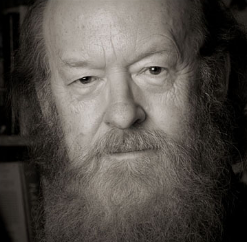 der in the United Methodist Church who has taught theology at Boston University School of Theology for many years. At one time, he was the Dean of Chapel at the university and is a past president of the American Academy of Religion. While the dean of chapel, Neville delivered two sermons available on his personal website. The first, “Jesus Leaving” addresses the meaning of the ascension. The second, “Freedom of the Spirit” addresses the scene in the upper room where the Holy Spirit descended like a mighty wind, “with tongues of fire” resting on the heads of the disciples. A tongue of fire, like wind symbolizing the Holy Spirit, is the official symbol of the United Methodist Church and holds a central place in the Wesleyan experience. In both of these texts, Neville navigates the spiritual space between literalism and skepticism. Well versed in the themes found in science and religion, Neville offers a view both accessible and theologically nuanced.
der in the United Methodist Church who has taught theology at Boston University School of Theology for many years. At one time, he was the Dean of Chapel at the university and is a past president of the American Academy of Religion. While the dean of chapel, Neville delivered two sermons available on his personal website. The first, “Jesus Leaving” addresses the meaning of the ascension. The second, “Freedom of the Spirit” addresses the scene in the upper room where the Holy Spirit descended like a mighty wind, “with tongues of fire” resting on the heads of the disciples. A tongue of fire, like wind symbolizing the Holy Spirit, is the official symbol of the United Methodist Church and holds a central place in the Wesleyan experience. In both of these texts, Neville navigates the spiritual space between literalism and skepticism. Well versed in the themes found in science and religion, Neville offers a view both accessible and theologically nuanced.
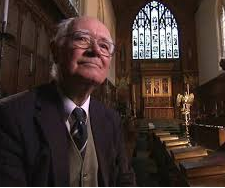 The third article comes from John Polkinghorne, both a physicist and an Anglican priest. In his 1994 book, The Faith of a Physicist, Polkinghorne presents his understanding of the Nicene Creed which affirms that Jesus “ascended into heaven and is seated at the right hand of the Father”. As he states in the book’s introduction, he is interested in “whether the strange and exciting claims of orthodox Christianity are tenable in a scientific age.” In the short passage below, Polkinghorne lays out his understanding of the creedal phrase this statement of faith. For Polkinghorne, simple literalism misses the rich symbolism of the creed and the texts that underlie it.
The third article comes from John Polkinghorne, both a physicist and an Anglican priest. In his 1994 book, The Faith of a Physicist, Polkinghorne presents his understanding of the Nicene Creed which affirms that Jesus “ascended into heaven and is seated at the right hand of the Father”. As he states in the book’s introduction, he is interested in “whether the strange and exciting claims of orthodox Christianity are tenable in a scientific age.” In the short passage below, Polkinghorne lays out his understanding of the creedal phrase this statement of faith. For Polkinghorne, simple literalism misses the rich symbolism of the creed and the texts that underlie it.
Finally, Biblical historian Bart Ehrman address the story of Pentecost found in the second chapter of Acts. After summarizing the story narrative, he asks the question “how are we to credit the Christian stories of miraculous conversion? Anyone who wants to accept them at face value will say they happened. But what about everyone else?” While Ehrman no longer considers himself a believer, there are many Christians who approach this story critically and not literally. His answer is that the stories were told repeatedly and with conviction which lead some to believe and pass it on and on and on. People were converted through the story itself.
We invite you to read the Biblical stories yourself and do your own reflection. Science will not give you an answer though it may set the guardrails. I suspect some will view them literally, others as antiquated legends and still others as deeply significant but not literally factual.
We appreciate the contributions we have received throughout 2017. We used most of our funds presenting our Evolution Weekend program on February 11, making it available as a live video feed and recording it so those unable to attend can view it at their leisure. Looking forward, we will continue to develop programs throughout 2018. We will need your support and hope you will consider helping us out. WesleyNexus is a 501(c)(3) charitable, educational organization, and we will acknowledge all gifts from individuals for tax reporting purposes.
Thanks in advance for your support.
God Bless,
Rick, Maynard, and the rest of the
WesleyNexus Board of Directors
*********************************
Jesus Leaving by Robert C. Neville
Here is a sermon by Robert Neville (Boston University School of Theology), theologian, philosopher and UMC elder. He closes his sermon with “I invite you to celebrate the Ascension, my friends, with three moods deep in the heart of Christian piety. Because Jesus has left, we are responsible for what we do as Christians, with no appeal to special authority. This mood is sober and serious, and it brings home to us just who we are, and how we relate to one another in particular loves of many kinds. Because Jesus is remembered, we can imagine him to be with us in advice, comfort, and touch, almost as if he is with us, although connected to us through books and centuries of traditions instead of direct sight and sound. This mood is the joy of mystical passion, of companionship with Jesus in the Spirit. More of this next week. Because Jesus ascended to prepare a place for us, we know that we have eternal life in God far richer than the present passing days. This mood is the hope for bliss and glory. The sober mood for personal responsibility reflects God’s creation of us in our particular characters. The mystical joy of possessing Jesus Christ in this life reflects God’s incarnation in the creation. The hope for eternal life in God reflects that, in the end, God is in all, and is all there is. May we give thanks for this infinite benefit we have received from God’s hands.” The sermon can be found here: http://www.robertcummingsneville.com/sermons/sermon-nurture-jesus-leaving
*********************************
Freedom of the Spirit By Robert C. Neville
In this sermon, Robert Neville addresses the meaning of the account in Acts when Jesus’ disciples experienced an enlivening, transforming experience so powerful that barriers of language and culture were transcended. After the ascension, Jesus is no longer experienced as intensely and personally as depicted in the resurrection stories found in Matthew, Luke and John. But the disciples are not left with nothing. They have the promise of the coming spirit which is fulfilled in the scene found in Acts. The main actor is the Holy Spirit. In this sermon, Neville points out that the “Holy Spirit has never been received comfortably within the Christian Church”. This is true of the early church councils and it is true today as well. Neville, as versed in science as any theologian and affirming of its findings, nonetheless understands that what we need to make room for is this sort of transforming spirit. Read the complete sermon here: http://www.robertcummingsneville.com/sermons/sermon-seasons-freedom-of-the-spirit
*********************************
From The Faith of a Physicist by John Polkinghorne.
“He ascended into heaven and is seated at the right hand of the Father”
The language of the creed, and the New Testament passages on which it is based (Luke 24:51; Acts 1:6-11; 2:34-6; Heb.8.1, etc.), is heavily symbolic at this point. We are not committed to the quaint picture, sometimes found in medieval stained glass, of the Lord’s feet projecting from the underside of a cloud, as he sets out on his space-journey to the heavenly realm. In scripture a cloud is the symbol of the presence of God (Exod. 19.16; Dan. 7.13; Mark 9.7, par.) and its role in the story of the ascension is to emphasize the divine authority of the exalted Christ. A similar purpose is served by the mythological language of the heavenly session. The words of Psalms 110.1: ‘The Lord says to my lord: “Sit at my right hand, till I make your enemies your footstool,”’ afforded the early Church some clue to how the Lordship of Christ was related to the fundamental Lordship of God – a clue quite probably originating in the probing words of Jesus himself (Mark 12:35-7, par.) – and that made this verse in the Old Testament text the most frequently referred to by the writers of the New Testament.
The ascension and the heavenly session symbolize two profound mysteries of Christian belief: that in Christ the life of humanity is taken up into the life of God, and that, though ‘we do not yet see everything in subjection to him’ (Heb. 2.8), yet Jesus Christ is the invincible agent of the ultimate purpose of God.
The Faith of a Physicist, 1994, p 123.
*********************************
From The Triumph of Christianity by Bart Ehrman
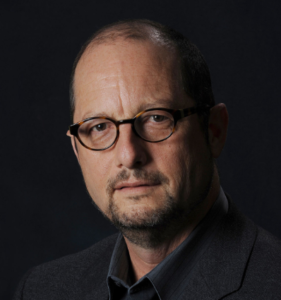
Bart Ehrman’s reflection on Pentecost can be found here.
*********************************
Reminders:
“Artificial Intelligence Turns Deep: Who’s in Control?”
64TH ANNUAL IRAS SUMMER CONFERENCE ON STAR ISLAND
(JUNE 23-30, 2018) WESLEYNEXUS participants qualify for a 30% discount. Please take this opportunity seriously.
I’m sorry Dave, I’m afraid I can’t do that…”
said HAL in the most famous line in 2001: A Space Odyssey.
From the IRAS website:
 From early myths of artificially created beings to today, the question “who’s in control” has troubled us. The future of AI is likely to have powerful consequences related to jobs, income distribution, social justice and our polity in general. On the 50th anniversary of 2001, IRAS returns to consider the prospects, opportunities and dangers of Artificial Intelligence. If we succeed in creating science fiction’s “conscious” machine, what would be our duties to it (as well as its duties to us)? How will humans identify and find meaning in life as the breadth of skills unique to living, sentient beings shrinks? Join us, as we consider both how AI will shape the future of humanity, and how we can insure that AI benefits society.
From early myths of artificially created beings to today, the question “who’s in control” has troubled us. The future of AI is likely to have powerful consequences related to jobs, income distribution, social justice and our polity in general. On the 50th anniversary of 2001, IRAS returns to consider the prospects, opportunities and dangers of Artificial Intelligence. If we succeed in creating science fiction’s “conscious” machine, what would be our duties to it (as well as its duties to us)? How will humans identify and find meaning in life as the breadth of skills unique to living, sentient beings shrinks? Join us, as we consider both how AI will shape the future of humanity, and how we can insure that AI benefits society.
IRAS cultivates a community of informed and respectful inquiry and dialogue at the intersections of science with religion, spirituality and philosophy in service of global, societal and personal well-being. Star Island provides an environment that frees all who come to renew spiritually, explore matters of consequence, and gain knowledge about the world as it might ideally be. Participants in the WesleyNexus network will qualify for a 30% discount on registration, room and board at Star Island, so this makes the conference an attractive option for you who receive this newsletter. We urge everyone to take seriously this dialogue opportunity.
For more information and to register: http://www.iras.org/2018-summer-conference.html
*********************************
American Scientific Affiliation Annual Meeting – July 27-39 – Wenham, Massachusetts
The annual ASA conference Iwill be hosted by Gordon College in Wenham, Mass at the end of July, and in addition to a superior academic / informational program, many other activities will be available. The beautiful Gordon College campus is located just 30 miles north of Boston with easy access to the Atlantic Ocean and the city itself. Taking advantage of its beautiful location, we have planned some regional pre-meeting field trips: a whale-watching cruise, a geology walk at Halibut Point State Park, a Red Sox game, and a tour of two MIT laboratories. We are also offering an optional post-meeting trip to Harvard Museum of Natural History and The Peabody Museum of Archaeology and Ethnology.
We hope that at least one of these activities will encourage you to attend. You can find more meeting information here. Right now, through May 31, you can save $50 on registration with the night owl discount. As is our custom, we will take the opportunity to highlight each of our plenary speakers and workshop leaders over the course of the next two months leading up to the conference.
Douglas A. Lauffenburger, our first plenary speaker on Friday, July 27, is Ford Professor of Bioengineering and (founding) head of the Department of Biological Engineering at MIT. His major research interest is the fusion of engineering with molecular cell biology in application to drug discovery and development. More than 100 doctoral students and postdoctoral associates have undertaken research education under his supervision. Lauffenburger has served as president of the Biomedical Engineering Society, chair of the College of Fellows of American Institute for Medical & Biological Engineering, on the Advisory Council for NIGMS, and as a co-author of the 2009 NRC report on A New Biology for the 21st Century.
Please join us in Wenham, Massachusetts to hear Doug and the other top-notch speakers!
More information can be found at www.ASA3.org.
*********************************
Annual Cosmos and Creation Conference at Loyola University in Maryland
 Friday June 8, through Sunday, June 10, 2018.
Friday June 8, through Sunday, June 10, 2018.
Loyola University Maryland | 4501 N. Charles Street, Baltimore, MD 21210
The 36th Annual Cosmos & Creation Conference will be held Friday June 8, through Sunday, June 10, 2018. The keynote speaker will be Michelle Francl, Bryn Mawr College, Adjunct Scholar at the Vatican Observatory. The topic of her presentations will be: Are scientists mystics?
For more information and registration, go to: https://www.loyola.edu/join-us/cosmos-creation.
*********************************
The Inside Story: Consciousness, Nature, Transcendence
A transdisciplinary conference on Mind, Matter, Meaning and Mysticism
November 9-10, 2018
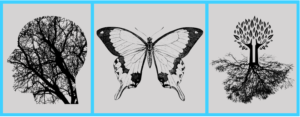
Sponsored by Villanova University, Department of Theology & Religious Studies, Connelly Chair in Christian Theology, the Augustinian Institute, Department of Philosophy, and Halloran Philanthropies.
Descartes’ famous dictum—I think, therefore I am—gave rise to the modern distinction between mind and matter. But “the inside story” is more complex and thrilling—possibly uniting mind and matter, meaning and mysticism.
Join the in-depth exploration of consciousness, nature, and transcendence, as scientists, philosophers, and theologians ask “What’s on the inside?” Keynote speakers include Philip Clayton, WesleyNexus Advisory Board Member and author of numerous books related to science and religion, including The Predicament of Belief and Mind and Emergence, Ilia Delio, a long time friend of WesleyNexus, past member of the Washington Theological Consortium Science and Religion Study group and author of Christ in Evolution, and Terrence Deacon, American Neuroanthropologist, Professor of Biological Anthropology at the University of California, Berkeley and author of Incomplete Nature: How Mind Emerged from Matter.
More information on the program can be found here:
https://www1.villanova.edu/villanova/artsci/theology/news_events/inside-story-conference/about.html
*********************************
Our Children’s Faith is the Biggest Casualty in the War on Evolution by Jennifer Secki Shields
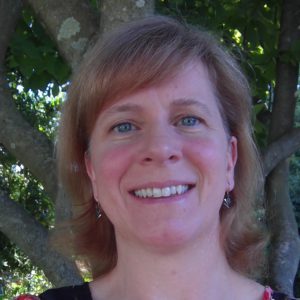 Yesterday, a colleague shared a report of yet another assault on the teaching of evolution in public schools, this one in Arizona where the state’s superintendent of public instruction, Diane Douglas, has led a campaign to remove evolution from the state’s science education standards. The move comes less than a year after she publicly advocated for introducing religious ideas into biology classrooms.
Yesterday, a colleague shared a report of yet another assault on the teaching of evolution in public schools, this one in Arizona where the state’s superintendent of public instruction, Diane Douglas, has led a campaign to remove evolution from the state’s science education standards. The move comes less than a year after she publicly advocated for introducing religious ideas into biology classrooms.
Sigh.
As a Christian, I have known many anti-evolutionists like Douglas. Generally, they view science, particularly evolution, as an enemy of Christian faith (it’s not). In their efforts to discount evolution, they believe they are being faithful. And they see efforts like Douglas’ as somehow defending belief in a Creator God and protecting their children’s faith.
Here’s the problem. The war on evolution is actually eroding Christianity in the U.S. And the biggest casualty in this war is our children’s faith.
In his book, You Lost Me, researcher Dave Kinnaman reports that nearly 60% of young Christians are dropping out of church and the practice of Christian faith. One of the top reasons is their perception that the church is anti-science. In describing their religious departures, these 18- to 29-year-olds also say that Christianity is anti-intellectual (18%), that churches are out of step with the scientific world we live in (29%), and that they have been turned off by the creation-versus-evolution debate (23%). The “dropout problem” that Kinnaman documented begins as early as age 15, but other studies tell us that children have negative perceptions of conflict between science and religious faith as early as age 11. Anti-evolution efforts, like the current one in Arizona, only serve to confirm and reinforce these perceptions.
I’ve seen firsthand how the kinds of perceptions quantified by Kinnaman impact local church ministry. They can hamper discipleship within the church and outreach beyond. The factors that drive young people away from church and faith are the same ones that make our neighbors mistrustful and, therefore, unwilling to cross the church threshold, even for something as secular as a movie night.
The truth is that our children are losing their spiritual lives and limbs in the war on science. Our churches are largely missing a generation of young people. While the anti-evolutionists hurl their grenades, Christians like me act as spiritual medics, tending the wounded and trying to put back together the shattered pieces of the next generation’s faith.
Is there a better way? Of course, there is. Each week in church pews across our country sit thousands of accomplished scientists—like Francis Collins, Kenneth Miller, and Nobel Laureate William Phillips—who both embrace evolutionary science and are deeply faithful followers of Jesus. They bear witness to fruitful Christian faith that is informed by evolution, rather than opposed to it. And theirs is the example of peace we need to model for our children.
Jennifer Secki Shields is the founder and director of Discovery & Faith, a ministry initiative to help the next generation experience the harmony between science and biblical faith.
*********************************
“The Future of Cybertechnology and the Quest for Security” – an evening with Carnegie Science
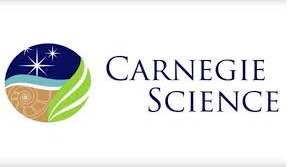 On Wednesday May 23rd, more than 300 persons gathered in the auditorium at the Carnegie Institution in downtown Washington DC to consider the compelling issues of cybertechnology and the quest for security. Principal speaker for the event was Ray Rothrock, who earned his B.S. in Nuclear Engineering from Texas A&M University in 1977, an S.M. in Nuclear Engineering from Massachusetts Institute of Technology in 1978, and an MBA with Distinction from Harvard Business School in 1988. Rothrock professionally is a venture capital investor who hit it big with three successive technology start-ups and now is CEO of Red Seal, Inc. Red Seal describes itself as the “foundation for resilience,” whose corporate mission is “to enable every enterprise to be resilient to cyber events in an increasingly complex, digital world.” Resilience is here described as “the ability to respond, recover and adjust within minutes rather than days or years” in the instance of any sort of cyber event or attack. Rothrock painted a picture in which the new reality is that all digitally networked enterprises and organizations will, at some point sooner or later, fall under cyberattack and be breached. Rothrock outlined some of the threats business and government both face, and contends that few executives know how to assess the resiliency of networks, how to identify and address weaknesses, or how to respond to exploits swiftly and effectively. Rothrock made some key points: 2013 was the watershed event: the attack on Target at Christmastime when the company lost some $400 in a matter of days. In a survey he recently discovered that 76% of U.S. CEOs consider that their company is adequately prepared, but he says 100% are vulnerable in ways they they can’t begin to comprehend. In this battle, he says, the hacker will always win, and those in Russia are by far the most sophisticated. Our current government is in the dark. Rothrock was joined on the platform by cybersecurity expert and former U.S. National Coordinator for Security, Infrastructure Protection and Counter-terrorism, Richard A. Clarke, who is now CEO of Good Harbor Risk management. Most of the previous basic points were confirmed in his remarks, and he pointed out that there are already thousands of bots on our power grid waiting to be activated. Clarke said it is impossible for industry to regulate itself, and it is impossible to foretell any improvements without a uniform national standard of measurement applicable to risk management. It was a sobering hour for everyone present, because there is no influential or national voice to which government and industry is listening to correct the situation.
On Wednesday May 23rd, more than 300 persons gathered in the auditorium at the Carnegie Institution in downtown Washington DC to consider the compelling issues of cybertechnology and the quest for security. Principal speaker for the event was Ray Rothrock, who earned his B.S. in Nuclear Engineering from Texas A&M University in 1977, an S.M. in Nuclear Engineering from Massachusetts Institute of Technology in 1978, and an MBA with Distinction from Harvard Business School in 1988. Rothrock professionally is a venture capital investor who hit it big with three successive technology start-ups and now is CEO of Red Seal, Inc. Red Seal describes itself as the “foundation for resilience,” whose corporate mission is “to enable every enterprise to be resilient to cyber events in an increasingly complex, digital world.” Resilience is here described as “the ability to respond, recover and adjust within minutes rather than days or years” in the instance of any sort of cyber event or attack. Rothrock painted a picture in which the new reality is that all digitally networked enterprises and organizations will, at some point sooner or later, fall under cyberattack and be breached. Rothrock outlined some of the threats business and government both face, and contends that few executives know how to assess the resiliency of networks, how to identify and address weaknesses, or how to respond to exploits swiftly and effectively. Rothrock made some key points: 2013 was the watershed event: the attack on Target at Christmastime when the company lost some $400 in a matter of days. In a survey he recently discovered that 76% of U.S. CEOs consider that their company is adequately prepared, but he says 100% are vulnerable in ways they they can’t begin to comprehend. In this battle, he says, the hacker will always win, and those in Russia are by far the most sophisticated. Our current government is in the dark. Rothrock was joined on the platform by cybersecurity expert and former U.S. National Coordinator for Security, Infrastructure Protection and Counter-terrorism, Richard A. Clarke, who is now CEO of Good Harbor Risk management. Most of the previous basic points were confirmed in his remarks, and he pointed out that there are already thousands of bots on our power grid waiting to be activated. Clarke said it is impossible for industry to regulate itself, and it is impossible to foretell any improvements without a uniform national standard of measurement applicable to risk management. It was a sobering hour for everyone present, because there is no influential or national voice to which government and industry is listening to correct the situation.
*********************************
ORIGIN: A Novel. 2017. Dan Brown. New York, Doubleday. 461 pages. ISBN: 9780-38551–4231.
Even the casual reader will recognize that Dan Brown is the author of The Da Vinci Code, Angels & Demons, and other popular novels, most of which feature the Robert Langdon character as the hero. This book, Brown’s latest, is similar in that respect, but the subject matter of the mystery thriller has deeper roots than his previous works. 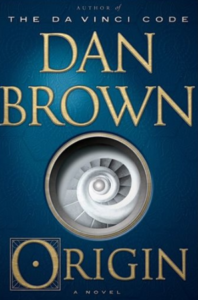 Here the mystery concerns the unraveling of the enigmatic “origin of life” quest, with the additional slant of a companion futurist conjecture.
Here the mystery concerns the unraveling of the enigmatic “origin of life” quest, with the additional slant of a companion futurist conjecture.
The plot centers around a curious character Edmond Kirsch, a 40-something self-made billionaire and computer geek who has used his money to build a supercomputer that harnesses massive calculating power with the latest quantum technology – not for the purpose of controlling the world, but to find the answer to two questions: Where do we come from? And it’s companion Where are we going? These two questions, Edmond claims, not only motivate his own work (in every waking moment), but are shared by people across the planet and through time, across all cultures and in every circumstance. The problem, for Edmond, is that the world’s religions have been providing answers to these questions for the past 10,000 years based on mythology and superstition, and Edmond’s objective is to utilize the computational power of his computers to provide the definitive answer to both questions from science.
So here we have the makings of a classical science vs religion controversy, a modus familiar to readers of Brown’s novels, but also one that generates a lot of print and discussion in our time. The approach taken by Edmond is based on his programming genius, and the depth of the capacity of his machine technology: he has consulted the world’s greatest ethnobiologists, paleontologists, chemists, and physicists, programming his supercomputer with all the sound science concerning human origins and evolution, the result being a synthesis of all available data on the origin of life. Brown references a good bit of this science, including the work of Stephen J. Gould and his theory of “punctuated equilibrium” to explain the so-called “gaps” in the fossil records. All of this is to show up the world’s creationists who always have a place for God in the equation.
The story of evolution painted by Brown (in the character of Edmond and his work), is fundamentally sound science, at least as far back as the first spark that converts inorganic chemistry into life. The way Edmond does this is to recreate the famous Miller-Urey experiment in the 1950s – which was deemed a failure at the time because it could not get beyond the emergence of basic amino-acids, short of what anyone would call “life.”
But, the problem (as defined by Brown) is that the time lapse was too short – what Edmond does is to have his supercomputer extend the amino-acids transformation for hundreds of years – and we do know that “deep time” has such patience. Edmond’s computers definitively show that “life” does emerge with this time extension, and, not only that, with the computer simulation continuing, the process shows that intelligence eventually emerges also. Thus, no need for God here.
So, with the first question, to this extent, answered, Edmond asks, what if we let the computers keep running the scenario into the future? Perhaps we can answer the second question: Where are we going? By this time one might be thinking that we will launch into some familiar science fiction plot, but no, Brown is careful to link past with future. In fact, in keeping with known quantities, Edmond’s computers identify the seeds of the future that are already recognizable in the present. Not only that, in this scenario our destiny is almost upon us, and it has nothing to do with heaven, Nirvana, Paradise, or the conjectures of any of the world’s great religions.
It will not be fair to say anything more in a review like this, so we can only encourage those interested to read the story for oneself. All of this unfolds in an elaborate – and really thrilling – tale in which Langdon once again solves the mystery. The story is complete with killers stalking the good guys as they compulsively carry out their orders from renegade priests and misguided law enforcement. But Brown has the entire novel set in the culture of contemporary Spain, and it is a virtual romp through the historic treasures of that country, supplemented by the fascinating architecture in the thoroughly modem city of Barcelona. At the very outset, Brown informs the reader that all of the art, architecture, historic sites, locations, science and religious organizations in the novel are real. As a result, a by-product of the story is to develop in the reader a longing to go visit these places on one’s own.
The twists and turns of the plot are too numerous to mention here – it will make a great movie – and the action is so fast-paced that one can move from beginning to end over a week-end. So even if one considers this a latest example of “escape literature,” not a lot of time need be invested. The value to the project is to see how few points there are in the nearly 500 pages when one might say “implausible.” There are very few cracks in the narrative concerning the science theme, so if one wants to argue with the enterprise on which Edmond has embarked, one would have to consider: how would YOU answer these two questions: Where do we come from? Where are we going?
